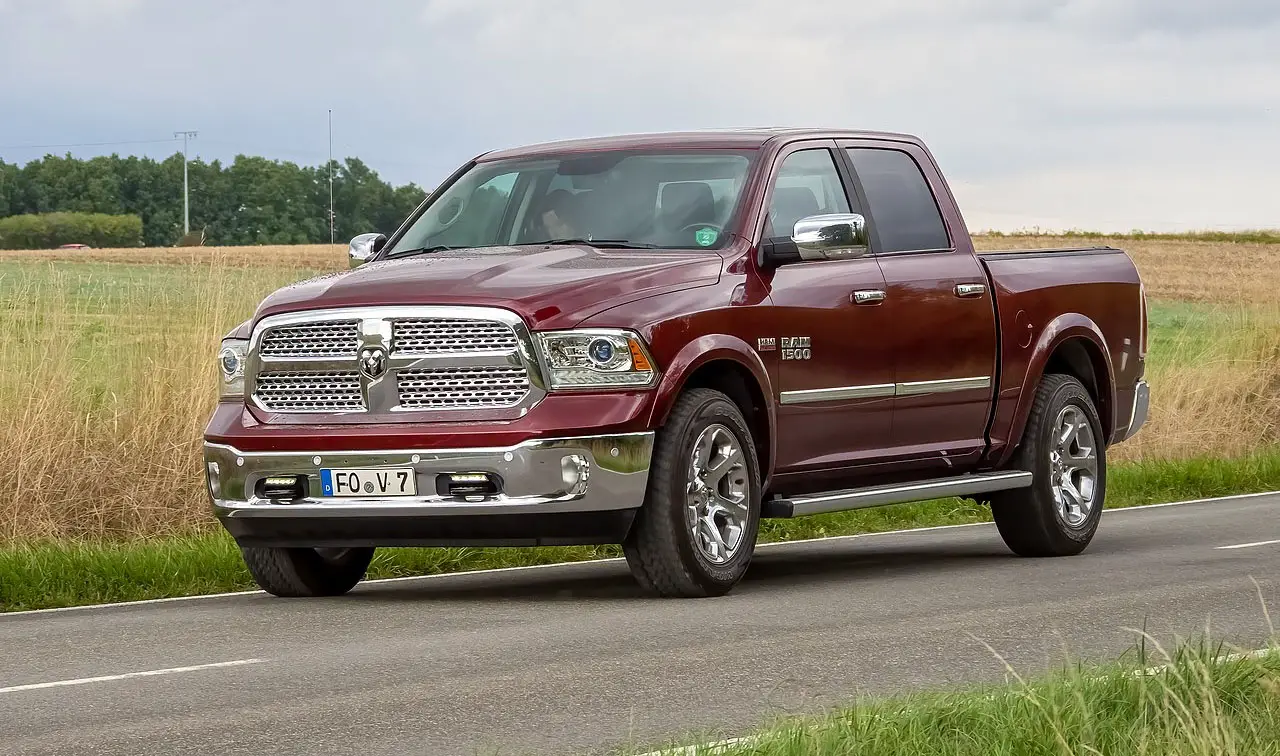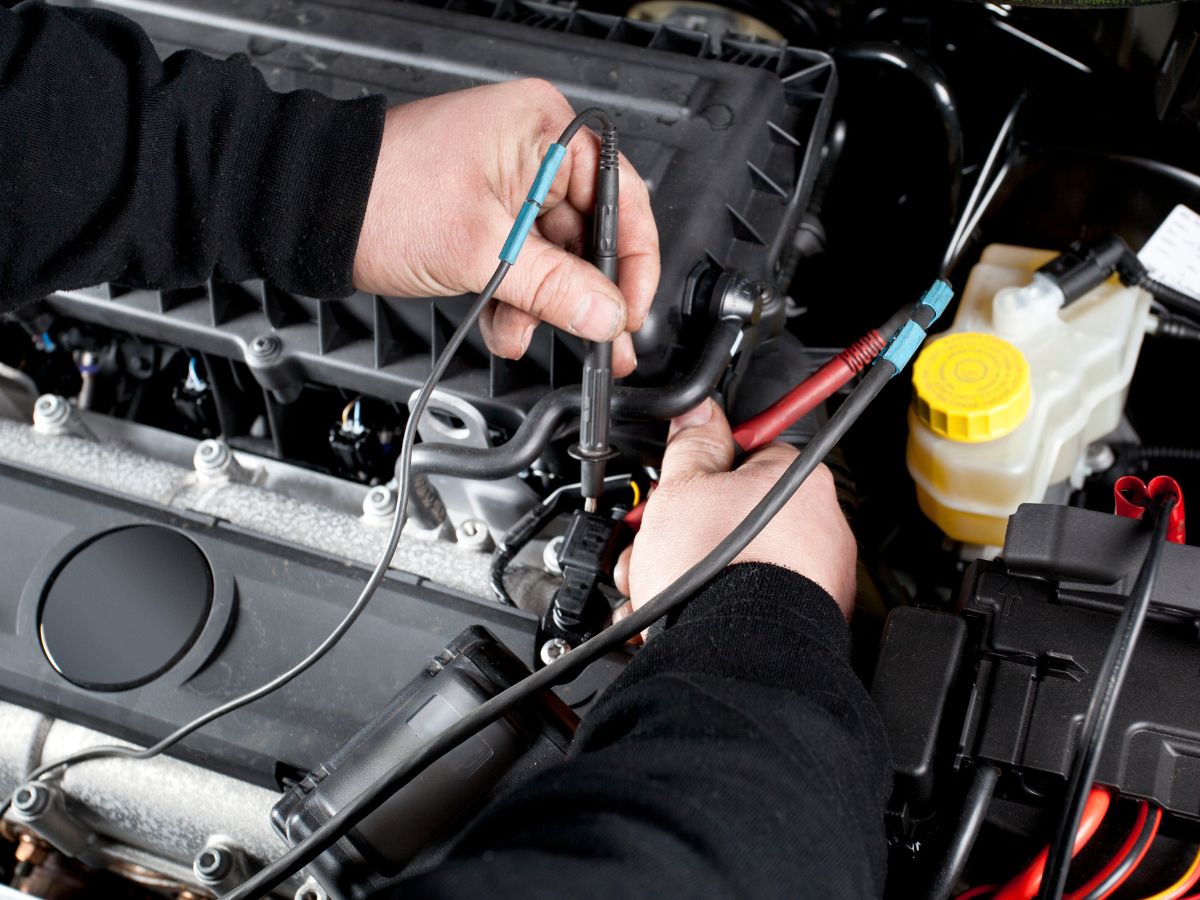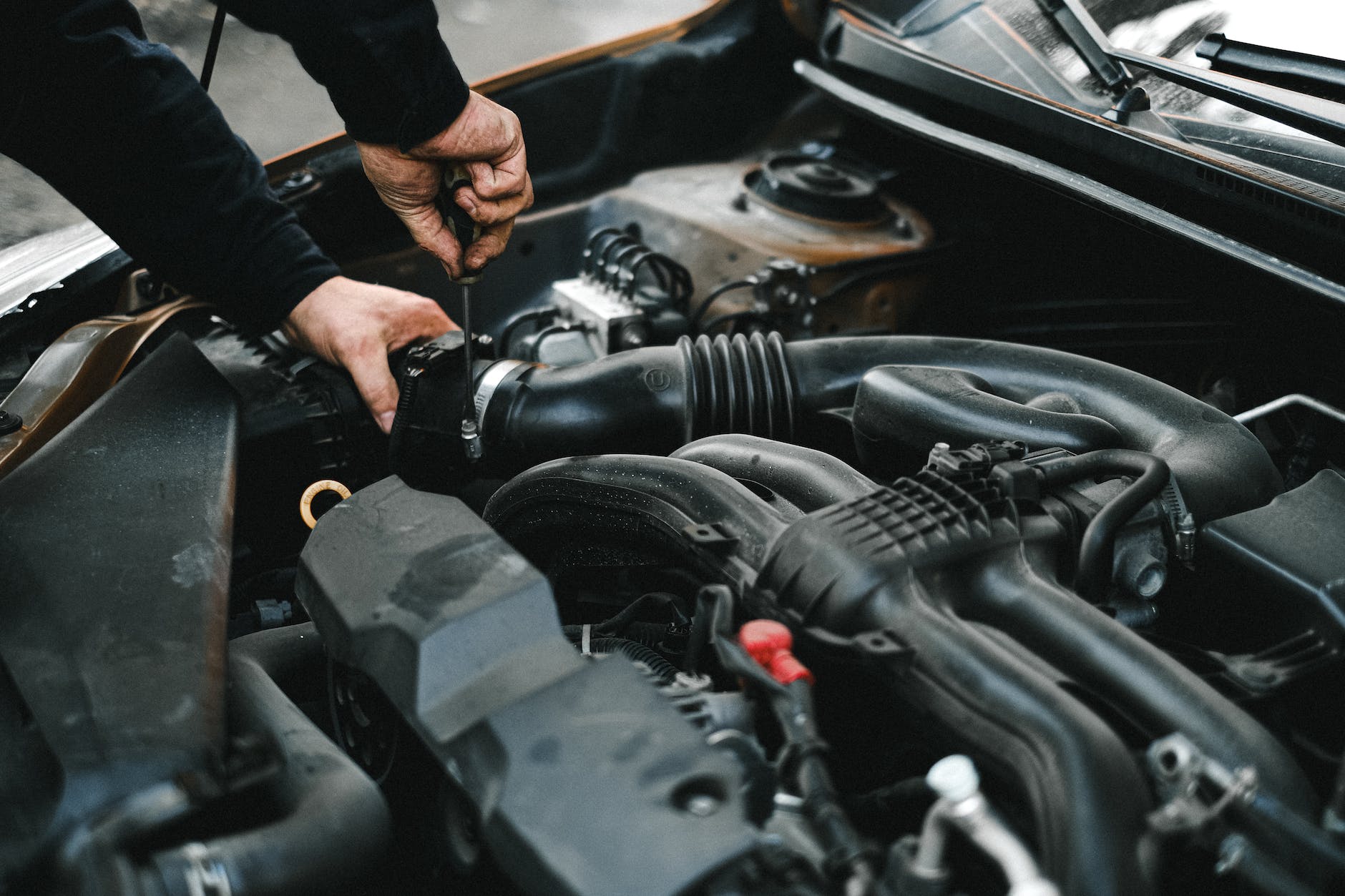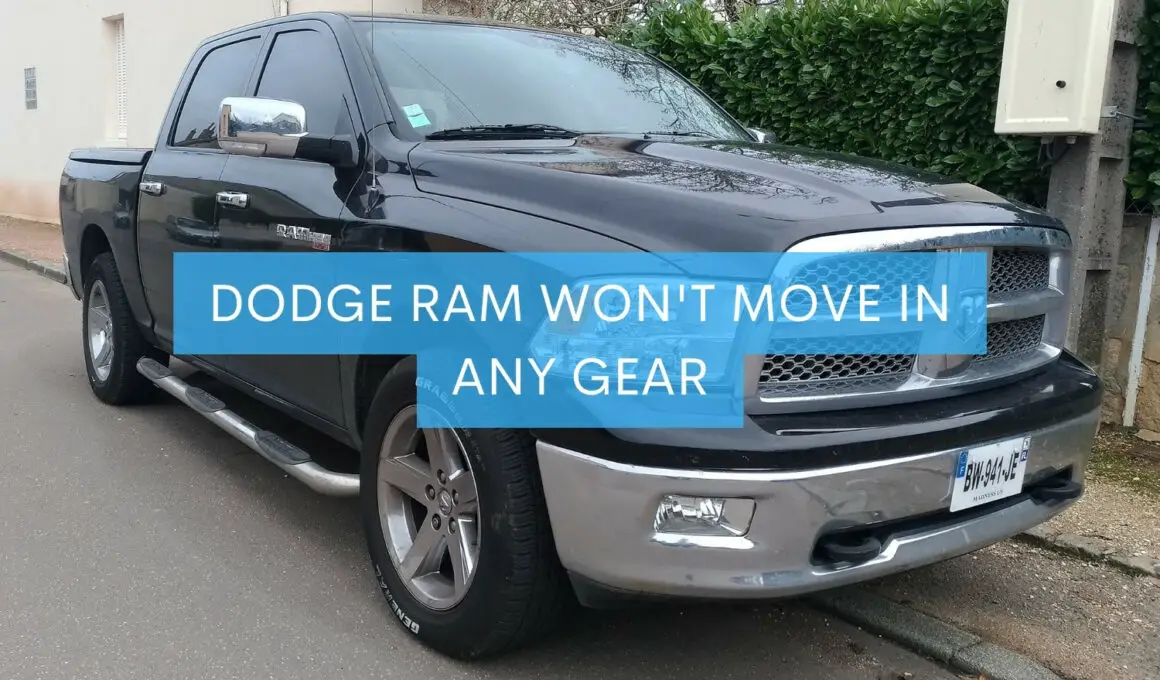In This Article Show
As an experienced mechanic with over 15 years in the automotive industry, I’ve seen almost every problem that can plague a vehicle, and one of the most frustrating issues for owners is when their Dodge Ram won’t move in any gear.
The Dodge Ram, renowned for its power and durability, is not immune to transmission issues, an integral component of any vehicle. When your truck refuses to budge in any gear, it can feel like you’re stuck in quicksand, regardless of how much power sits under the hood.
This is a common problem I have encountered and resolved countless times throughout my career. It can stem from various causes, some more complex than others. However, understanding the problem is the first step toward a solution, and that’s precisely why I’ve put together this comprehensive guide.
In this blog post, we’ll be taking an in-depth look at the common causes of why your Dodge Ram won’t move in any gear, how to diagnose these issues, their potential fixes, and preventive measures to avoid such problems.
Understanding Your Dodge Ram’s Transmission System
Before diving into why your Dodge Ram might refuse to move in any gear, it’s crucial first to understand the central role of the transmission system in your vehicle. The transmission is the heart of how your truck moves, acting as the complex intermediary between the engine and the wheels.
In simple terms, the transmission takes power from the engine and transfers it to the wheels, allowing the vehicle to move. It does this through various gears that give your truck the right amount of power for different speeds.
However, when something goes wrong within this system, such as when your Dodge Ram won’t move in any gear, it often points to an issue that needs immediate attention.
I should tell you transmission issues should never be ignored. If left unaddressed, they can escalate from minor inconveniences to major, often more expensive problems.

Common Causes of a Dodge Ram Not Moving in Any Gear
When your Dodge Ram refuses to move in any gear, it’s often a sign that something is wrong with the transmission system. There could be several culprits, each with varying degrees of severity. Let’s discuss some of the most common causes;
1. Low Transmission Fluid Levels
The transmission fluid is the lifeblood of your transmission system. It lubricates the moving parts, cools the system, and helps transfer power from the engine to the wheels. If the fluid level is too low, it can prevent your Dodge Ram from moving. This could be due to a leak or insufficient fluid replacement.
2. Failed Shift Solenoid
The shift solenoid in your transmission controls the flow of transmission fluid and is responsible for changing gears. If it fails, it can cause your vehicle to stop moving altogether because the gears cannot change as needed.
3. Burnt or Damaged Clutch Plates
In manual Dodge Ram trucks, the clutch plates play a vital role in allowing the truck to change gears and move. Over time, these plates can become burnt or damaged, affecting the truck’s ability to shift gears.
4. Broken Transmission Bands
Transmission bands are crucial in automatic Dodge Rams, as they help hold the gears in place. If these bands break, the gears cannot engage properly, causing the vehicle to stay stationary even when the engine is running.
5. Damaged Torque Converter
The torque converter is an essential component in automatic transmissions that takes power from the engine and transfers it to the transmission. If damaged, it can prevent power transfer, causing the Dodge Ram not to move.
How to Diagnose Your Dodge Ram’s Transmission Issue
Properly diagnosing your Dodge Ram’s transmission issue is a crucial step towards resolving it. If you’re faced with a situation where your truck won’t move in any gear, here are a few steps you can take to identify the problem:
1. Visual Inspection
Begin with a visual inspection of your transmission system. Look for any visible signs of damage such as leaks, broken parts, or burnt components. A common culprit is often a transmission fluid leak. If you notice red fluid underneath your vehicle, this could very well be the cause of the issue.

2. Using a Diagnostic Scan Tool
A diagnostic scan tool can be a useful ally in identifying transmission issues. These devices can read error codes from your vehicle’s onboard computer, indicating potential issues like a failing shift solenoid or problems with the torque converter.
3. Professional Diagnostics
While there’s a lot you can do on your own, sometimes professional help is necessary. As a mechanic with over 15 years of experience, I can attest that certain issues require professional diagnostics tools and expertise. If you cannot determine the cause of the problem, consider taking your Dodge Ram to a certified mechanic or service center.
Fixes for When Your Dodge Ram Won’t Move in Any Gear
Once you’ve identified the cause of your Dodge Ram’s transmission issue, it’s time to take action. Each cause has a corresponding fix, some of which you can do yourself while others might require professional help.
Here are potential solutions based on the issues we discussed earlier:
1. Replenishing Transmission Fluid
If low transmission fluid is the issue, the fix can be as simple as refilling it. Always ensure you’re using the correct type and amount of fluid specified in your owner’s manual. If a leak is causing low fluid levels, you’ll need to address the leak, which might involve replacing seals or other components.
2. Replacing a Failed Shift Solenoid
A failed shift solenoid will likely need replacement. While it’s possible for a skilled DIYer to perform this task, it requires precision and is often best left to professionals.
3. Fixing Burnt or Damaged Clutch Plates
In the case of burnt or damaged clutch plates, the solution typically involves replacing the clutch. This is a complex job that requires specialized tools and knowledge, so it’s recommended that a certified mechanic handle this task.
4. Repairing or Replacing Broken Transmission Bands
Broken transmission bands will need to be replaced or repaired. This procedure can be intricate and time-consuming, requiring the skills of a professional mechanic.
5. Resolving Issues with a Damaged Torque Converter
A damaged torque converter can be a complex issue to fix, usually requiring a replacement. Due to the importance and complexity of this component, it’s highly advised to consult with a professional for this repair.
In my extensive experience, timely repairs can save you from bigger headaches down the line. Whether you’re tackling the issue yourself or taking your Dodge Ram to a professional, addressing the problem promptly is crucial.

Preventive Measures to Avoid Transmission Problems
As the saying goes, prevention is better than cure. To ensure that your Dodge Ram operates smoothly and efficiently, here are some preventive measures and best practices that can help you avoid transmission problems:
1. Regular Maintenance
One of the best ways to prevent transmission issues is to keep up with your vehicle’s recommended maintenance schedule. Regular oil changes, transmission fluid checks and replacements, and routine inspections can go a long way in preventing problems.
2. Timely Repairs
Don’t ignore minor issues. A small problem today can turn into a significant one tomorrow. If you notice any changes in how your Dodge Ram operates, get it checked out immediately.
3. Proper Driving Habits
Avoid aggressive driving behaviors such as hard acceleration or abrupt stops. These can strain your transmission system unnecessarily and lead to premature wear and tear.
4. Regular Inspection of Transmission Fluid
Keep a close eye on your transmission fluid. It should be at the correct level and maintain a clear, red color. If it becomes dark or smells burnt, it’s time to change it.
5. Keep an Eye on Warning Signs
Pay attention to warning signs such as odd noises, gear shift issues, or even dashboard warning lights. Early detection can prevent more severe problems down the line.
Wrapping it up
As an experienced mechanic and automotive writer, I’ve encountered numerous instances where a Dodge Ram won’t move in any gear. As we’ve discussed, this frustrating situation can be due to low transmission fluid, a failed shift solenoid, burnt or damaged clutch plates, broken transmission bands, or a damaged torque converter.
Understanding these potential causes and knowing how to diagnose them is the first step towards a resolution.
Whether the fix involves replenishing transmission fluid, replacing parts, or getting professional assistance, timely action is critical to prevent further damage and costly repairs.
Equally important is the practice of preventive measures to keep your Dodge Ram in optimal condition. Regular maintenance, timely repairs, and mindful driving habits can help avoid transmission problems and enhance your vehicle’s longevity.










